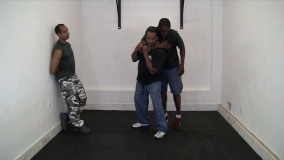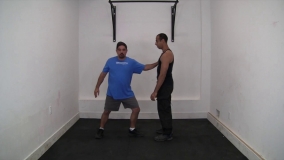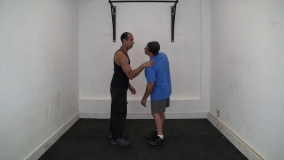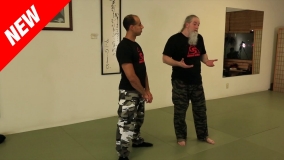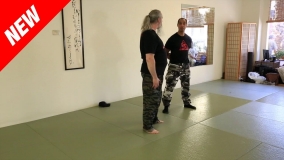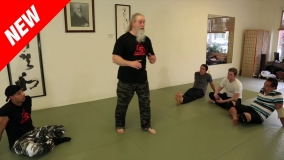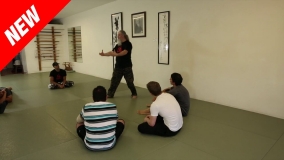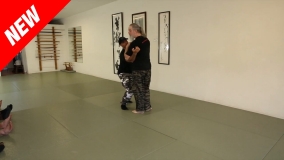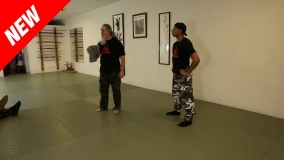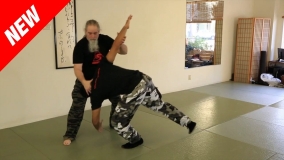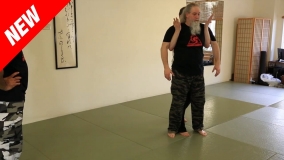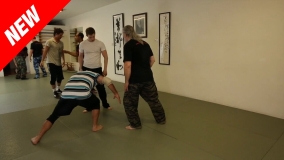Self-Defense

Supplemental – Q&A
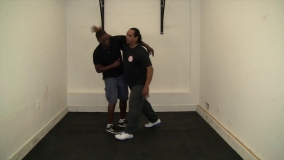 Why Are Foot Movements So Important And How Should I Train With Them?
Why Are Foot Movements So Important And How Should I Train With Them?7 minutes and 39 seconds
Indio answers Phil’s question regarding the importance of foot movements. He also discusses some important solo training exercises that he likes to practice with ropes, pipes, and sticks while working his foot movements.
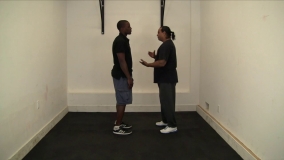 How Does Indio Train And How Did He Train From The Very Beginning?
How Does Indio Train And How Did He Train From The Very Beginning?5 minutes and 2 seconds
Indio address Phil’s question of how Indio likes to train and how he started training from the very beginning when he first started studying under Grandmaster Freedman. Indio talks about the importance of intention. He discusses the importances on sticking to and focusing on particular drills and not getting sidetracked and going off on intellectual tangents.
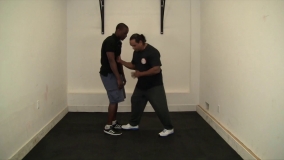 What’s Indio’s Personal Striking Style And His Philosophy On Hitting?
What’s Indio’s Personal Striking Style And His Philosophy On Hitting?3 minutes and 13 seconds
Indio addresses Phil’s question on Indio’s personal philosophy of infighting and striking and generating power behind his strikes. Indio also addresses the concept of never reaching for opportunities that are not presenting themselves. Instead, simply take or strike what is closest and easiest to hit.
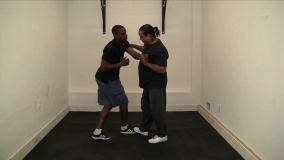 What’s Indio’s Approach And Strategy For Infighting Or Entering Into His Opponent’s Space?
What’s Indio’s Approach And Strategy For Infighting Or Entering Into His Opponent’s Space?11 minutes and 11 seconds
Indio answer’s Phil’s question regarding Indio’s approach for “infighting” or entering into his opponent’s space. Indio talks about the importance of recognizing angles and perceiving fleeting doorways that allow you to safely enter into an opponent’s space.
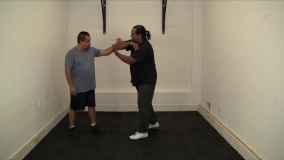 How Do You Deal With A Fast And Speedy Opponent?
How Do You Deal With A Fast And Speedy Opponent?31 minutes and 29 seconds
Indio addresses Mike’s question of how to defend yourself against a really fast opponent. Indio talks about the importance of foot movements, the triangle of unbalance, timing, angles, and sensitivity. He also discusses the importance of learning how to move while maintaining your own balance at all times. There is some profanity in the module so if that bothers you we are just giving you a heads up.
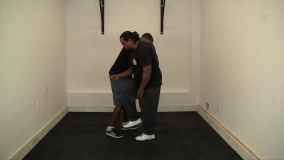 How Do You Train During Times You Don’t Have A Training Partner And How Do You Deal With Different Sized Opponents?
How Do You Train During Times You Don’t Have A Training Partner And How Do You Deal With Different Sized Opponents?14 minutes and 22 seconds
Indio answers Phil’s question of how he likes to train during times when he doesn’t have a training partner. Indio also talks about adapting your martial art to deal with different sized opponents from tall to short to heavy to skinny.
 How Do You Prevent Yourself From Wrestling With Your Opponent?
How Do You Prevent Yourself From Wrestling With Your Opponent?4 minutes and 44 seconds
Indio addresses Phil’s question of how he prevents himself from wrestling with his opponent. Indio talks about the concept of grabbing back when he is being grabbed. He also talks about shifting his body and changes angles on his opponent to make it more difficult for his opponent to grab him. Additionally, Indio discusses the importance of unbalancing his opponent through pain through various types of striking.
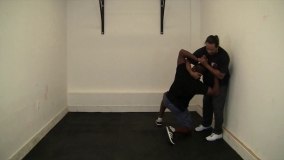 How Do You Defend Yourself If Someone Throws You Up Against A Wall?
How Do You Defend Yourself If Someone Throws You Up Against A Wall?3 minutes and 21 seconds
Indio answers Phil’s question of how Indio likes to defend himself if an opponent throws him up against a wall. Indio likes to stay very relaxed and take advantage of various openings for strikes and joint locks.
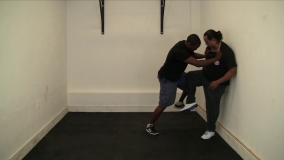 How Do You Counter An Opponent Who Is Holding You Against A Wall In A Clinch And Throwing Knees At You?
How Do You Counter An Opponent Who Is Holding You Against A Wall In A Clinch And Throwing Knees At You?4 minutes and 35 seconds
Indio addresses Phil’s questions of how to counter an opponent who is trying to throw knees into your body while pinning you against a wall. Indio talks about the importance of taking away the opponent’s ability to throw knees and also not allowing yourself to even get into a vulnerable position to begin with.
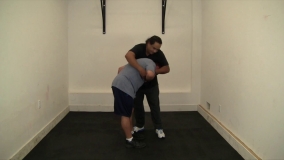 How Does Indio Defend Against Shoots, Kicks, Headlocks, Clinches, And Other Scenarios?
How Does Indio Defend Against Shoots, Kicks, Headlocks, Clinches, And Other Scenarios?8 minutes and 34 seconds
Indio demonstrates “randori” (free sparring) and addresses Mike’s questions regarding how to defend against kicks, headlocks, clinches, people shooting in for takedowns, and other scenarios.
 Which Body Parts Should Be Used When Striking From Long Range, Mid Range, and Close Range?
Which Body Parts Should Be Used When Striking From Long Range, Mid Range, and Close Range?11 minutes and 27 seconds
Dave responds to a popular question regarding which body parts to use for striking at various ranges (long range, mid range, and close range). He shows when you would strike using your fingers, wrist flextions, your elbows, biceps, your fists, your knees, your shins, your hips, your ribs, and your head. This is an important module so you don’t break your hand while defending yourself on the street.
 How Do You Defend Against An Opponent Who Is Mounting You And Punching Away?
How Do You Defend Against An Opponent Who Is Mounting You And Punching Away?32 minutes and 24 seconds
Indio and Dave answers Phil’s question of how do you defend yourself against an opponent who is mounting you and raining down punches and elbow. This is a common position that is often seen in UFC or MMA fights. It’s very important to know how to defend against the mount.
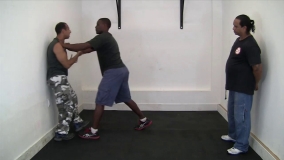 How Do You Manipulate An Opponent Against His Will Without Using Strength?
How Do You Manipulate An Opponent Against His Will Without Using Strength?14 minutes and 35 seconds
Indio and Dave answer Phil’s question of how to manipulate an opponent’s against his will by using multiple simultaneous pushes, pulls, and by attacking the opponent’s joints and anatomy. This is a great exercise for bouncers or law enforcement who might have to remove someone from a building or bring someone down to the ground to arrest and cuff them.
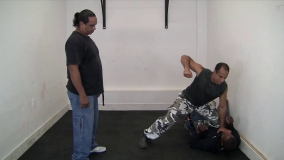 How Do You Defend Yourself Against “Oh-Sh*t-Worst-Case-Scenarios”
How Do You Defend Yourself Against “Oh-Sh*t-Worst-Case-Scenarios”16 minutes and 48 seconds
Indio and Dave answers Phil’s question about defending yourself against worst case scenarios where you may be pinned down on the ground near a wall and about to be beaten severely by someone on top of you. Indio and Dave discuss the importance of peripheral vision and peripheral touch, deep breathing, rooting, and relaxation to feel where there are openings to escape and openings to create and cause trauma. This is an important module to help ease your fear about getting trapped in a situation that appears to be hopeless. In FMKJ there is an escape for every hold. You will invent your way out.
Learn Alongside Mike
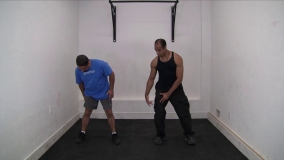 Dave Teaches Mike How To Root With His Lower Body While Moving So His Balance Is Not Weak Against Multiple Attackers
Dave Teaches Mike How To Root With His Lower Body While Moving So His Balance Is Not Weak Against Multiple Attackers19 minutes and 20 seconds
Dave helps Mike transcend the sport paradigm by showing Mike that although he is very powerful and can knock people out with either hand (Mike was a JKD instructor under one of Bruce Lee’s top students and was also a former competitive power lifter) his balance is compromised and he is only strong in one direction — moving forward. He is susceptible to losing his balance against multiple attackers from the sides and from behind. Dave helps Mike get better at rooting while moving offensively with his foot movements and rooting while he is striking for warding off multiple attackers.
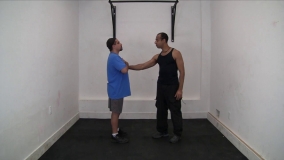 Dave Teaches Mike How To Develop Sensitivity During First Touch To Help Mike Create Infinite Options
Dave Teaches Mike How To Develop Sensitivity During First Touch To Help Mike Create Infinite Options12 minutes and 33 seconds
Dave teaches Mike not to blindly grab someone’s hands when defending against a hold or grab from your opponent. Instead, Dave shows Mike how to feel his opponent’s bone structure, strength, weakness, balance, and range of motion by feeling deeper than opponent’s skin. This is an important drill to learn how to connect with your opponent and become one with your opponent so you can end confrontations quickly without having to struggle and fight.
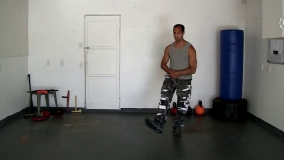 Dave Teaches Mike How To Get Rid Of Excess Slack When Grappling To Effortlessly Manipulate An Opponent
Dave Teaches Mike How To Get Rid Of Excess Slack When Grappling To Effortlessly Manipulate An Opponent14 minutes and 55 seconds
Dave helps Mike learn how to get rid of excess slack and learn how to connect deeply with an opponent’s skeletal structure. This enables Mike to grapple and manipulate an opponent with minimal force and no wasted movements. Dave also addresses Mike questions regarding the problems of cross training in multiple martial arts and the differences between FMKJ and MMA.
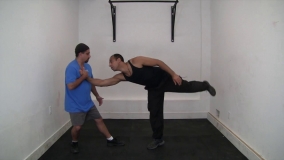 Dave Teaches Mike How To Move An Opponent Once The Hooks Are In The Opponent’s Bones And All Slack Is Removed
Dave Teaches Mike How To Move An Opponent Once The Hooks Are In The Opponent’s Bones And All Slack Is Removed10 minutes and 57 seconds
Dave helps Mike tie everything together. Mike learns to sink his hooks into his opponent’s skeletal system and then get rid of all lack. Only then can Mike effortlessly manipulate his opponent at will.
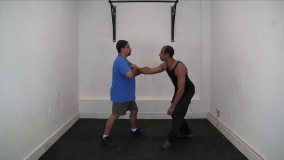 Dave Teaches Mike To Strike When He’s Grabbed To Help Him Unbalance And Create
Dave Teaches Mike To Strike When He’s Grabbed To Help Him Unbalance And Create14 minutes and 59 seconds
Dave continues training Mike and has Mike now add on some striking movements in addition to putting his hook’s into his opponent’s skeletal system and eliminating all slack. By adding strikes the exercise starts becoming more dynamic and more realistic in terms of how Mike might actually defend himself on the street.
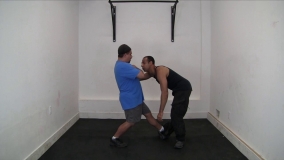 Dave Helps Mike Get More Reps And Practice Defending Against Grabs By Attacking The Opponent’s Elbow
Dave Helps Mike Get More Reps And Practice Defending Against Grabs By Attacking The Opponent’s Elbow12 minutes and 44 seconds
Dave helps Mike get better at defending against grabs through more repetitions and feedback. In particular, Mike begins focusing on attacking the opponent’s elbow and grabbing onto the bones and protrusions of the elbow to facilitate easier manipulation.
Learn Alongside Andy
 Indio And Andy Get Repetitions Sparring With Randori
Indio And Andy Get Repetitions Sparring With Randori5 minutes and 13 seconds
Indio and Andy go back and forth with the sparring or randori where each person attacks the other and responds with creative techniques. This is a good video to watch and get ideas for creating your own personalized techniques and developing your own signature style of Ketsugo Jiu-Jitsu*.
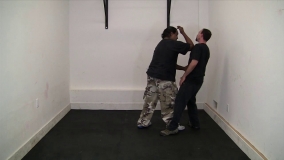 Indio Works With Andy On Andy’s Randori And Explains The Importance Of Training Slowly To See More Options
Indio Works With Andy On Andy’s Randori And Explains The Importance Of Training Slowly To See More Options5 minutes and 29 seconds
Indio works with Andy on Andy’s randori skills. Indio stresses the importance of timing and mirroring the same speed that your opponent is moving. Indio also emphasizes the importance of training slowly so you can develop the ability to see more options and learn more techniques and strengthen your ability to create infinite variations.
 Indio Helps Andy With Randori And Explains The Importance Of Creating Variations Off Your Mistakes
Indio Helps Andy With Randori And Explains The Importance Of Creating Variations Off Your Mistakes26 minutes and 13 seconds
Indio helps Andy with his “randori” or free sparring. Indio explains the importance of making mistakes and learning to create new opportunities or ideas for new techniques from these “mistakes.” Indio also explains the importance of getting off the line of attack.
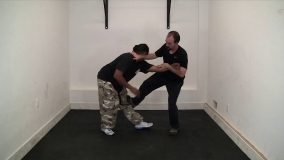 Indio Critiques Andy And Demonstrates The Importance Of Sensitivity And Unbalancing When Creating
Indio Critiques Andy And Demonstrates The Importance Of Sensitivity And Unbalancing When Creating16 minutes and 00 seconds
Indio critiques Andy’s randori and also answers a bunch of Andy’s questions. In particular, Indio explains the importance of developing sensitivity when creating to be able to counter an opponent’s counter technique. Indio also explains the importance of unbalancing, staying close, and stepping on the opponent’s foot in the context of helping Andy to create more efficiently and to make it more difficult for Andy’s opponent to resist and counter.
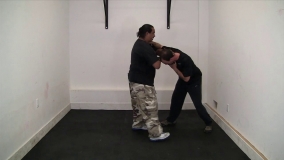 Indio Teaches Andy About His Opponent’s Anatomy And How To Easily Create “Car Collision” Type Hits
Indio Teaches Andy About His Opponent’s Anatomy And How To Easily Create “Car Collision” Type Hits11 minutes and 5 seconds
Indio helps Andy with his randori and explains the importance of being mindful of your opponent’s anatomy so you can create your techniques by being aware of the specific opportunities that your opponent presents. Indio also helps Andy perfect the ability to maximize striking power by learning to create car collision type hits or hitting an opponent while moving or manipulating their energy and momentum into your strike.
Learn From Grandmaster Freedman
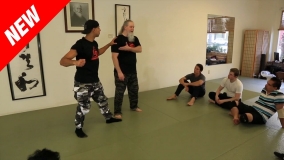 Don't Worry About Fighting
Don't Worry About Fighting7 minutes and 28 seconds
Grandmaster Freedman stresses the importance of not worrying about fighting while you're training. Your progress will slow down dramatically if you're too worried about fighting and not focusing on learning particular skill-sets and exercises that build on one another and over time will teach you how to defend yourself. He also stresses the importance of gaining super sensitivity through your skin for self-defense applications.

